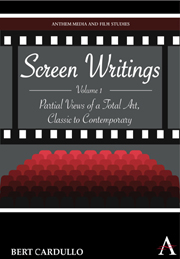Book contents
- Frontmatter
- Contents
- List of Illustrations
- Introduction: The Necessary Film
- Part I Children and the Cinema
- Part II Literature and Adaptation
- Part III Views and Interviews
- Part IV World Enough and Time
- 10 The World Is Too Much with Us: Violence on Screen, or Realism, Reality, and the An-esthetic of the Unreal
- 11 Characterizing Space, Configuring Time: Notes, Mostly on Antonioni's L'avventura and La notte
- 12 As Time Goes By: Memory and the Movies
- Bibliography of Related Criticism
- Index
- Plate section
11 - Characterizing Space, Configuring Time: Notes, Mostly on Antonioni's L'avventura and La notte
from Part IV - World Enough and Time
Published online by Cambridge University Press: 05 March 2012
- Frontmatter
- Contents
- List of Illustrations
- Introduction: The Necessary Film
- Part I Children and the Cinema
- Part II Literature and Adaptation
- Part III Views and Interviews
- Part IV World Enough and Time
- 10 The World Is Too Much with Us: Violence on Screen, or Realism, Reality, and the An-esthetic of the Unreal
- 11 Characterizing Space, Configuring Time: Notes, Mostly on Antonioni's L'avventura and La notte
- 12 As Time Goes By: Memory and the Movies
- Bibliography of Related Criticism
- Index
- Plate section
Summary
The movies, whatever they may have been or may yet become, are currently filling (yet again) the emptiness left by our theater's abdication from anything we can recognize as our experience. And only snobbism, professional investment, or myopia can prevent us from seeing that. A handful of movies are filling the space: six, eight, perhaps a dozen in the last few years. Three or four are filling more of it than the rest. As for the bulk of films, more than one person has said that mass tastes belong more to sociology than aesthetics, a dictum as applicable to Broadway as to Hollywood. Most plays are bad, most movies are bad; yet it has been my observation that almost nothing in the recent theater has been nearly so good as some of the films of the new Iranians, of the so-called Fifth Generation in China, of the Europeans Aki Kaurismäki, Michael Haneke, Nanni Moretti, Mike Leigh, and the Dardenne brothers, of the Asians Jun Ichikawa and Hong Sang-soo, and of the following Americans: Neil LaBute, David Lynch, Jim Jarmusch, Victor Nuñez, and Todd Solondz.
Before going on, I should set down some propositions. The first, which should already be clear, is that the movies are an art form, full-fledged, conscious, of legitimate birth, and needing no more defenses or rationales.
- Type
- Chapter
- Information
- Screen WritingsPartial Views of a Total Art, Classic to Contemporary, pp. 169 - 188Publisher: Anthem PressPrint publication year: 2010



